Masahisa Fukase is part of that strange generation of Japanese artists born before the Second World War and who came to maturity after their nation was defeated and devastated. They are, in a distinctly Japanese way, a lost generation. Fukase was born on Hokkaido, Japan’s northernmost island, in 1934 and, it seems, always knew he would be a photographer. He attended Nihon University in Tokyo where, predictably, he studied photography. After graduating in 1956 he took a position with Dai-Ichi Advertising as a commercial photographer.
The work provided him with a steady income and a diversity of experience, both of which were useful as he pursued his own personal photography. Fukase had two solo gallery shows fairly early in his career—Oil Refinery Skies in 1960 and Kill the Pigs 1961—which drew some critical praise without being a financial success. The photographs (which are virtually impossible to find now) appear to have been hard-boiled, gritty, even gruesome images made during visits to a slaughterhouse in Tokyo. Those photos were mixed with photos of the intertwined naked bodies of Fukase and his first wife
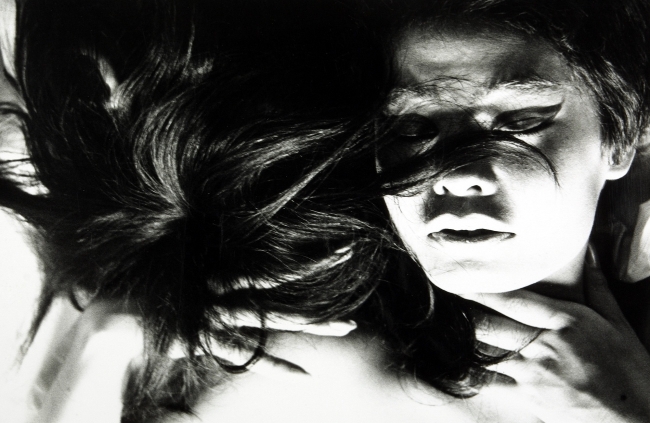
In the early 1960s, Fukase began to turn his lens away from dreary refineries and slaughterhouses. He got divorced, and his new work displayed an entirely different approach; it revealed a talent for expressing a variety of moods. Some of the work was playful and carefree, some tongue-in-cheek, some lyrical and romantic. It’s revealing that Fukase’s next exhibition was entitled Play. His work began to sell. The personal and often joyful nature of the photos were a stark contrast to the nihilistic impressionist images made by most other Japanese photographers of his generation.
Fukase remarried. He began to obsessively photograph his new wife, Yōko, mostly with her collaboration. The photos were positively received by Tokyo art critics, and were apparently personally fulfilling for Fukase. Eventually, they were less fulfilling for his wife. She began to feel he only saw her through the lens of his camera. She became increasingly unhappy, describing her life in this period as “suffocating dullness, interspersed by violent and near suicidal flashes of excitement.” Eventually she decided the only way to assume control of her own life was to remove herself from her husband’s life. In 1976, after thirteen years of marriage, she left him.
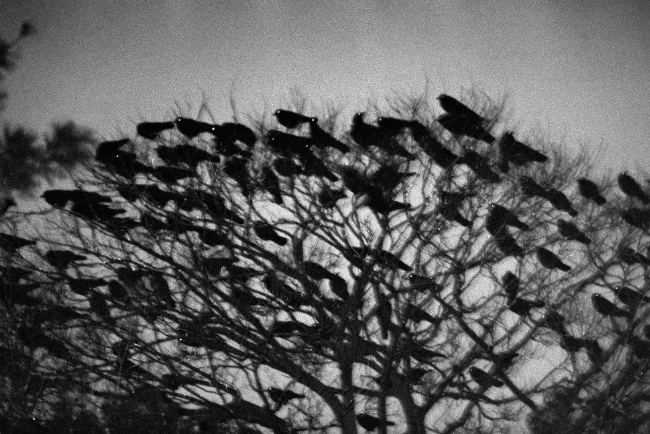
What happened afterwards changed Fukase and his career. Depressed and despondent, he took a train back to visit his hometown on Hokkaido. On the way he noticed mobs of ravens were often gathered around the various train stations. He began to get off at each of the stops to take photographs. Those birds—and the approach Fukase created to photograph them—would come to dominate his work.
These photographs of crows and ravens most definitely do not fall into the category of wildlife photography. Fukase’s approach emphasized the eldritch power of the birds. The images aren’t really about the birds as birds, but as visual representations of the photographer’s emotional state. In spirit and form, the photographs resemble traditional Japanese sumi-e, an ink and wash art form famous for its stark style. The birds—and even the non-bird figures—look as though they were sketched with the same sort of intensity of purpose used by the practitioners of that art.
Ravens, it should be noted, occupy an intriguing place in Japanese mythology. They belong to a class of supernatural creatures called tengu. These beings are often portrayed as disruptive spirits, harbingers of evil times. Even those tengu which are sometimes protective of people are also considered unpredictable and potentially dangerous.
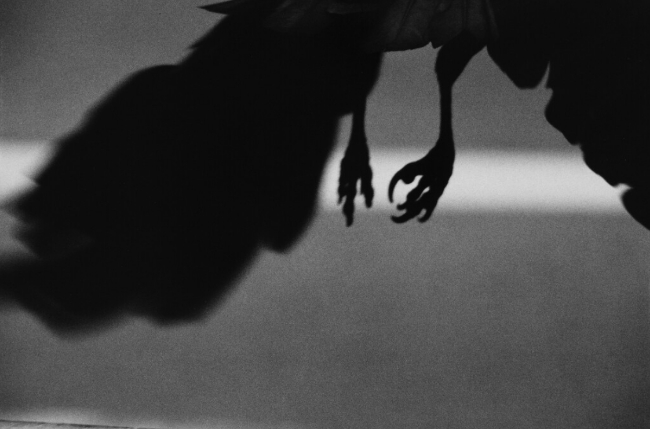
In 1986 a selection of photographs from this series were gathered together and published as a book entitled Karasu (Ravens). The book drew international attention and five years later would be re-issued in English under the title The Solitude of Ravens. In a way, the title is both ironic and illuminating; ravens, crows and other corvidae are social creatures. A solitary raven is an anomaly, a freak of nature.
It’s striking that Fukase’s non-raven photographs of this period also feel like they’re of ravens. They’re full of dark, angular shapes and figures engaged in incomprehensible activities. The images are introspective, remote, emotionally inaccessible, almost alien. These are intensely emotional images, eerie and fey, filled with a desperate sense of loss and raw despair. The photos are so powerfully personal they’re almost painful to look at.
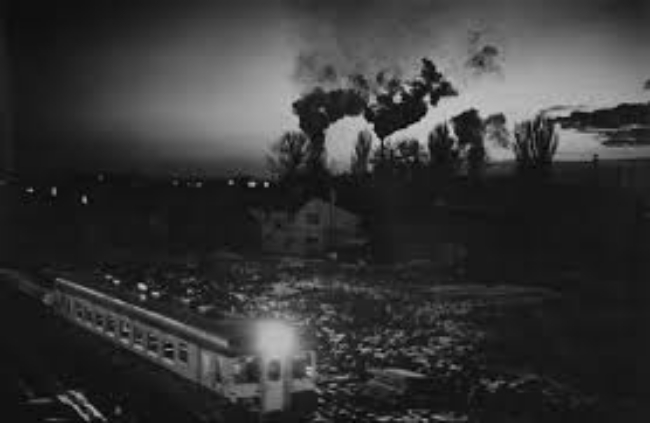
Fukase’s raven images aren’t merely spiritually dark, they’re literally dark—under-exposed. The intensive graininess, the dramatic use of blur, and the eccentric composition all combine to generate a singular series of photographs. In tone and approach these photographs are all strikingly similar and yet each photograph is completely distinctive.
Looking at Fukase’s raven series, it’s difficult not to feel torn by conflicting emotions. We are thankful he made such amazing photographs, but unhappy he had to experience the emotional distress that sparked them. We benefit from his misery.
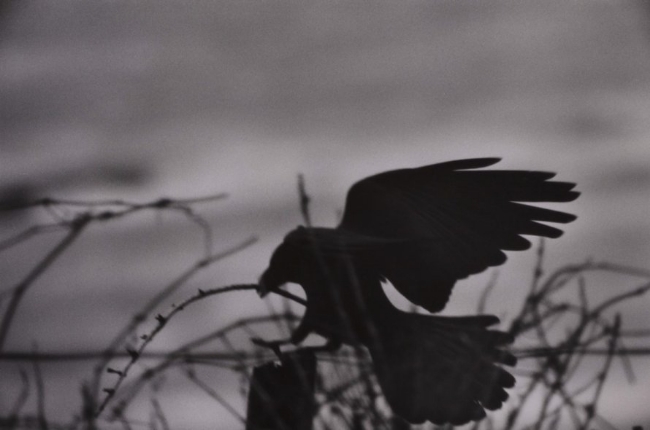
That misery remained with him. Despite the international success of his raven series, despite the years that passed after the end of his marriage to Yoko, and despite the increasing popularity of his work in his homeland, Fukase remained melancholy and depressed.
“I work and photograph while hoping to stop everything. In that sense, my work may be some kind of revenge drama about living now.”
In the summer of 1992—a year after the re-publication of The Solitude of Ravens—Masahisa Fukase got drunk and tumbled down a flight of stairs at a favorite bar. He suffered severe head trauma and slipped into a coma. He remains comatose to this day.
According to reports, his ex-wife Yōko, now remarried, continues to visit him twice a month.
